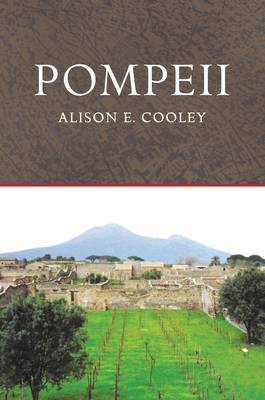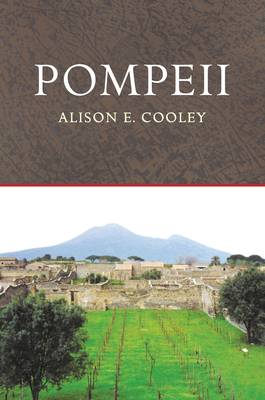
- Afhalen na 1 uur in een winkel met voorraad
- Gratis thuislevering in België vanaf € 30
- Ruim aanbod met 7 miljoen producten
- Afhalen na 1 uur in een winkel met voorraad
- Gratis thuislevering in België vanaf € 30
- Ruim aanbod met 7 miljoen producten
Omschrijving
Pompeii is Italy's third most popular tourist attraction, with millions of visitors each year. Images of the town are familiar all around the world. But even today our picture of the site is being changed by new archaeological discoveries. The concerns and techniques of today's archaeologists are far removed from those of the earliest excavators. Before turning to the cultural and political background behind the site's rediscovery in 1748, Alison Cooley examines whether it really did remain undisturbed up to that point. In the second half of the nineteenth century the fall of the Bourbon monarchy dramatically heralded a new era of archaeological exploration under the direction of Giuseppe Fiorelli. And in the twentieth century excavation transformed our image of the urban environment of Pompeii, raising new questions as it dug ever deeper. This book explores the impact of scientific advances, archaeological innovations, and contemporary politics upon interpretations of Pompeii over the last 250 years, including the ways in which advances in volcanology have transformed our picture of its last moments.
Specificaties
Betrokkenen
- Auteur(s):
- Uitgeverij:
Inhoud
- Aantal bladzijden:
- 160
- Taal:
- Engels
- Reeks:
Eigenschappen
- Productcode (EAN):
- 9780715631614
- Verschijningsdatum:
- 30/10/2003
- Uitvoering:
- Paperback
- Formaat:
- Trade paperback (VS)
- Afmetingen:
- 157 mm x 233 mm
- Gewicht:
- 294 g

Alleen bij Standaard Boekhandel
Beoordelingen
We publiceren alleen reviews die voldoen aan de voorwaarden voor reviews. Bekijk onze voorwaarden voor reviews.











